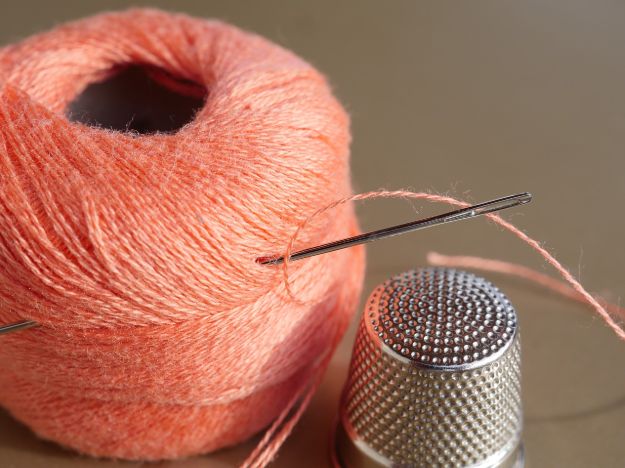Most of the time, beginners would find hand sewing difficult. Are you one of them? Then, allow us to teach you some helpful tips and tricks that will keep you motivated and help you get started!
Hand Sewing: 11 Tips and Tricks For Beginners
Learn These Exciting Tips And Tricks To Start Up With Your Hand Sewing
A lot of DIY sewing projects that require machine sewing don't necessarily mean that hand sewing is no longer needed. Let's give you an example. A buttoned dress made from a sewing machine would still need hand sewing for the buttons! So, if you're a beginner and finds it hard to hand sew, fret not! There is always a precise solution for your problem. The tips and tricks that we're about to share can make your sewing better and faster without going through some complex procedure to have the successful outcome that you always want. Include these tips and tricks to your hand sewing skill and you'll be an expert in no time! Here we go!
1. Work On The Right Needle For Your Sewing Project
Your needle is an essential part of your sewing project. Whether it is for hand sewing or machine sewing, you can never push through with your sewing without it. And there are times that sewing by hand is necessary, so you need to know the right needle for your sewing project. Check for more information here.
2. Use The Right Thread For The Right Fabric
Using the right thread is vital for any sewing project. And for proper guide on choosing the right sewing thread, you may want to know which type of sewing thread would be most suitable for specific fabrics. click here.
Sewing is a hobby that has these 3 P’s: Profitable, Pleasurable and Playful. Plus there more are significant reason… pic.twitter.com/Mh7KQN3eM3
— SewingDotCom (@Sewingdotcom) September 21, 2016
3. Run Your Thread Through A Wax
If you're thinking how this can be related to hand sewing, then you'll be surprised that wax products like beeswax or thread heaven can make your thread tangle-free. By running your thread through a wax, it makes insertion a lot easier compared when not!
4. Use Safety Pin For Elastic Insertion
You can make elastic insertion a lot easier just by pinning through the elastic piece using a safety pin, then pushing it through the elastic case until you reach the other end. Use a small safety pin on working through a small elastic casing and use a large safety pin for a large elastic casing.
Here's how to use a pin for elastic insertion by Melissa Lunden from HowcastArtsRec.
5. Iron The Fabric First Before And After Sewing
Pressing your fabric before sewing gives you a more precise fabric measurement, and pressing your finished sewing project when you're done would give you a professional, polished look!
Here are some important tips to make before starting on your sewing project by Denise Wild from StudioFabricana.
6. Cut The Edges Of Your Fabric Before Pre-Washing
Using your pinking shears, cut the edges of your fabric first before pre-washing them. The zigzag edges help prevent lots of unraveling and falling apart.
7. Spread Clear Nail Polish On Top Of The Button Thread
Nail polish isn't just used for your nails but is also a smart idea to secure your clothes button threads. With just a few dab of it, then it can already prevent a lot of those clothes button threads from fraying.
8. Use A Hair Spray On Your Sewing Thread
If you're having difficulty inserting a thread through a needle hole, one great tip is to use a hair spray onto it. It helps in stiffening the thread to make insertion easier.
9. Place Tissue Paper Underneath Your Slippy Fabric
When using slippy fabrics, place tissue paper underneath the fabric and you'll then discover that it is faster and easier to cut. To discover another idea, click here.
10. Use Steel Wool As Stuffing For Your Pincushion
Steel wool can be found in the market whenever you do your groceries. It has the capacity to sharpen pins and needles when they're in use! Want a tutorial for making your own? Click here.
11. Use Thimble For Your Hand Sewing
Many believe that wearing a thimble is awkward and uncomfortable, but wearing one is a must. It helps one's finger from pushing the needle and helps avoid needle prick injury. Learn how to use a thimble, here.
Click the play button here to watch this smart hand sewing tips by Melissa Esplin.
These great pieces of information help you do your work better and easy, and helps you make the most out of your hand sewing projects. You may want to try all these sewing tips, you wouldn't know how great you could possibly become! So which one did you find amusing? Hope you had so much fun learning today!
Want to learn some sewing tutorials Click here.
Like this? You'll also like…
Sewing Scissors | What are the Different Types?
15 Sewing Room DIY Organization Ideas For Sewing Mavens
